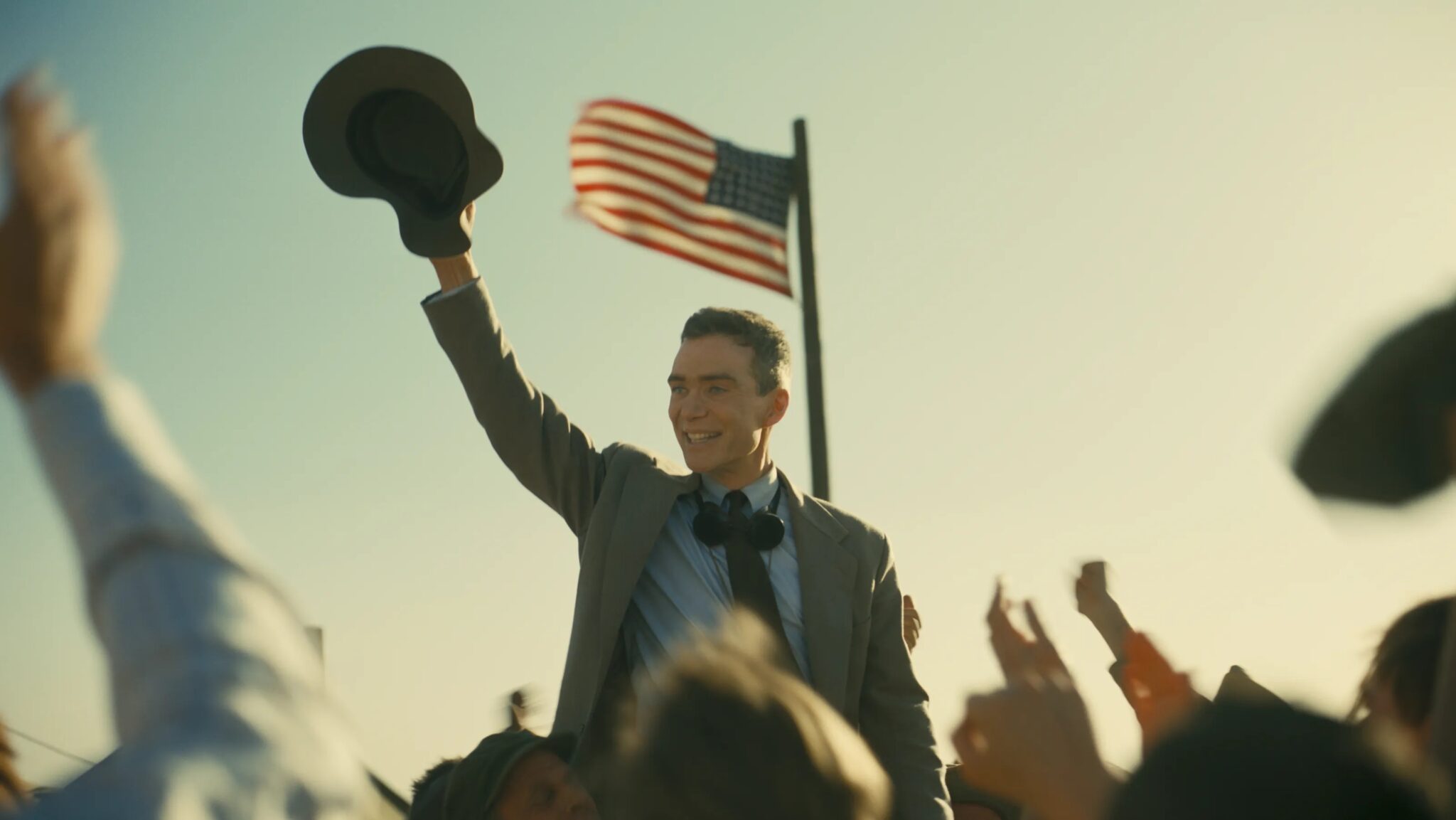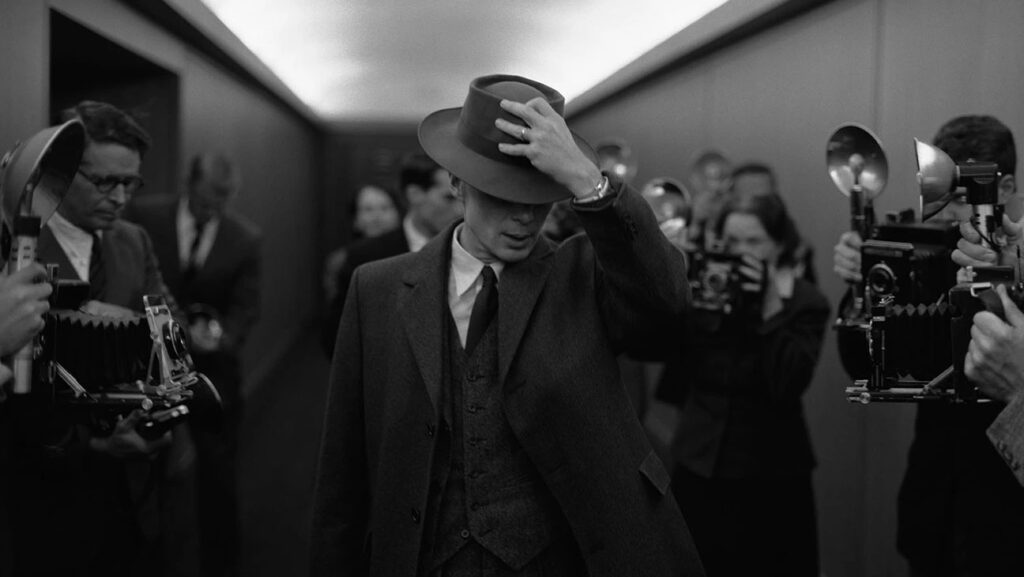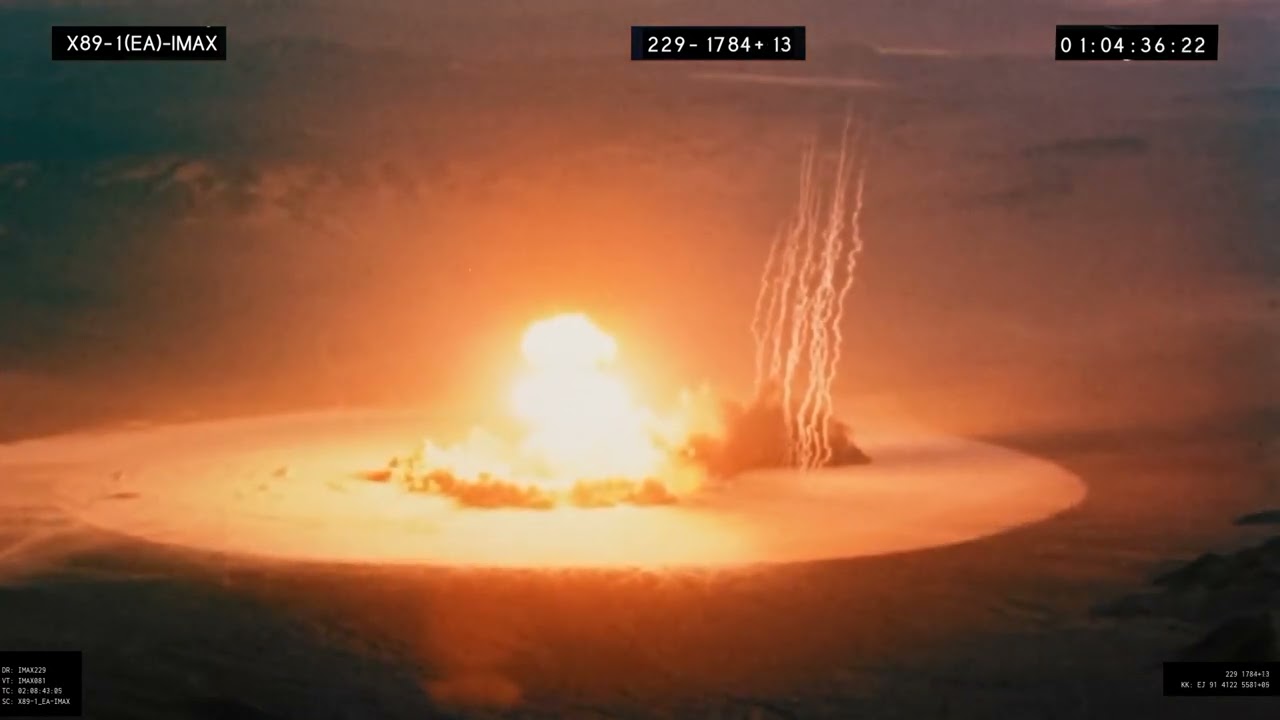No, it did not involve dropping an atomic bomb.
Christopher Nolan piqued audiences’ interest in his twelfth feature film, Oppenheimer, when he told Total Film that he had achieved the effect of detonating an atomic bomb without the use of CGI. This led to many fans jokingly saying that the British auteur with his eye on realism had somehow convinced Universal Pictures, the studio he worked with on Oppenheimer rather than Warner Bros., to purchase and blow up a real nuclear device in the middle of the desert to replicate the Trinity Test, the world’s first atomic bomb explosion.
However, this wasn’t the case—and isn’t practical narrative filmmaking either. So how did Nolan create the bomb effect in Oppenheimer? Let’s get into it.
Got a true story you want to tell? Enter it into the True Story & Public Domain Screenplay Competition!
How Oppenheimer Pulls Off the Atomic Blast Effect
Special Effects Supervisor Scott R. Fisher, who has now worked with Nolan on the director’s previous films including Interstellar and Tenet, let Total Film peek behind the curtain to see how the larger-than-life visuals were created.
“It was definitely not as rigorous with day-to-day filming,” said Fisher. “[Nolan] said, ‘There’s not as much stuff for you on this as the other one, but there’s a couple of things we do have to cover. And that was, of course, the Trinity explosion, and some prop builds, and elements of different things that we had throughout the film.”
Nolan is famous for using practical effects in a world where most films use heavy CG to create larger-than-life effects. “I find CG rarely is able to grab you,” Nolan told Empire for their July issue. “It tends to feel safe. Even if it’s impressive and beautiful, it’s difficult to make you feel danger. And we were presenting the ultimate danger. We needed it to feel threatening, nasty, and frightening to the audience.”
Read More: Barbenheimer: Why Barbie and Oppenheimer Are Facing Off at the Box Office

Oppenheimer (2023)
Recreating the Trinity Test without CG was a huge challenge for Nolan to take on, which is why he brought Visual Supervisor Andrew Jackson on board early to find ways to create most of the visual elements, such as the quantum dynamics and quantum physics, of the test practically.
Nolan, Fisher, and his team found a way to create the practical effect by using an old Hollywood in-camera trick: forced perspective. Forced perspective is a technique that uses the space between your subjects to manipulate the viewer’s perception of the space and distance between the two objects to create an optical illusion. One of the most famous examples of forced perspective in cinema is in The Lord of the Rings trilogy.
“We don’t call them miniatures; we call them ‘big-atures,'” he explained. “We do them as big as we possibly can, but we do reduce the scale so it’s manageable. We get it closer to the camera, and do it as big as we can in the environment.”
When it came to the explosion of the bomb, the intense blaze was “mostly” a combination of gasoline and propane “because you get so much bang for your buck,” Fisher said. Aluminum powder and magnesium were then added to the mixture to mimic the instant blinding flash that so many records recall of the nuclear blast. “We really wanted everyone to talk about that flash, that brightness. So, we tried to replicate that as much as we could.”
But not every explosion is created equal. Nolan described the technique of creating the bombs used during filming as “very experimental” and ranging in size. “Some on a giant scale using explosives and magnesium flares and big, black powder explosions of petrol, whatever,” Nolan said. “And then some absolutely tiny, using interactions of different particles, different oils, different liquids.”
Director of Photography Hoyte Van Hoytema told Variety, “We created science experiments. We built aquariums with power in it. We dropped silver particles in it. We had molded metallic balloons which were lit up from the inside. We had things slamming and smashing into one another such as ping-pong balls, or just had objects spinning. We had long shutter speeds, short shutter speeds, wide negative color, negative overexposure, underexposure. It was like a giant playground for all of us.”
Read More: Screenwriting Wisdom from Christopher Nolan

‘Oppenheimer’ (2023)
How Do You Record Explosions on Film?
Nolan and Van Hoytema set out to make Oppenheimer on film and finished it on film. Using Kodak 35mm and 65mm on IMAX, the largest format available, Nolan and Hoytema captured some of the best-looking explosions in cinema history.
A deep depth of field is already necessary when working with the “big-atures,” which allows the camera to already be in the best settings to capture explosions. This protects the film from being overexposed by the intense flash of the explosions.
Now, you have to capture explosions that audiences can see. Explosions are quick, and the awe-stopping moment of the explosion can start and end within seconds. By adjusting the frame rate of the camera, the team can capture the explosions in slow motion.
Rumor had it that one of the cameras Nolan and Hoytema attempted to use was a Photo-Sonics 35mm 4C high-speed rotary prism camera, which is capable of 2,500 frames per second. However, if a shot requires a faster camera, then creatives must rely on a rotary prism camera. The Photo-Sonics 16mm E10 is one such camera that can capture up to 10,000 frames per second while still using film, making it a great solution for slowing down motion to a near standstill.
Unfortunately, the camera was unable to capture usable footage at such a high rate for a feature film. Instead, the cameras used on Oppenheimer maxed out at 150 fps. The pyro work on the film was done at a substantial scale due to the limits of in-camera magic.
Read More: The Insane Film Technology Behind ‘Avatar: The Way of Water’

Oppenheimer (2023)
While the close-ups of the fiery explosions that have been teased throughout the trailers of Oppenheimer are a hair-raising experience in themselves, the infamous mushroom cloud that the atomic bomb creates is a challenge that Christopher Nolan accepted without hesitation.
“The most obvious thing to do would be to do them all with computer graphics,” the writer-director said. “But I knew that that was not going to achieve the sort of tactile, ragged, real nature of what I wanted. … The goal was to have everything that appears in the film to be photographed. And have the computer used for what it’s best for, which is compositing, and putting ideas together; taking out things you don’t want; putting layers of things together.”
Nolan is a filmmaker who is dedicated to pushing the boundaries of filmmaking, creating new technology with IMAX to present the brilliant complexities of Robert J. Oppenheimer in a way that presents the visual tones to the audience while entertaining them. The filmmaker is one who cares about the details, spending most of his pre-production time creating accurate depictions of atomic bombs and black holes in a way that serves the audiences and pushes filmmaking technology, all while keeping his cast and crew safe.
Oppenheimer is now in theaters.
Read More: How ‘Evil Dead Rise’ Carries on Sam Raimi’s DIY Filmmaking Legacy
CHECK OUT OUR PREPARATION NOTES SO YOU START YOUR STORY OFF ON THE RIGHT TRACK!
The post How Oppenheimer Created a CGI-Free Atomic Blast appeared first on ScreenCraft.
Go to Source
Author: Alyssa Miller



